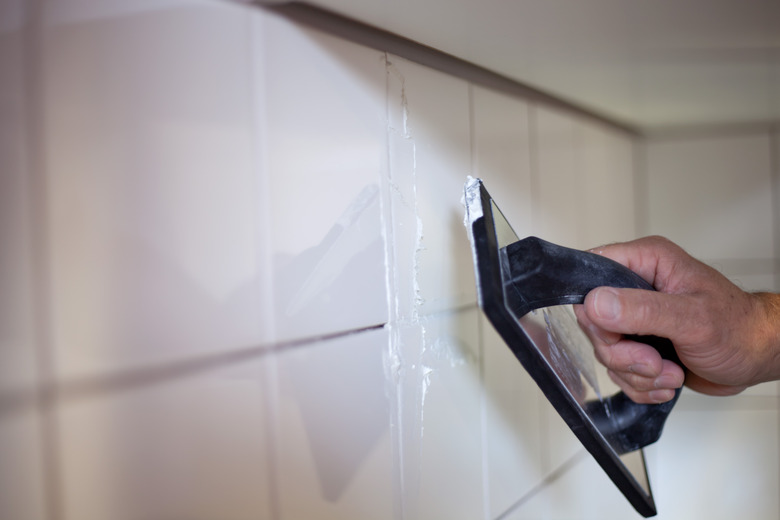Can You Put New Grout On Top Of Old Grout?
We may receive a commission on purchases made from links.
Grungy grout is ugly to look at and can lead to serious problems if water or grit is allowed to sink between the joints of the tile that the grout seals. Although you don't have to remove all of the grout when attempting to repair or regrout a wall or floor entirely, there are a few key points to know when placing grout over grout. Be prepared before you putter with putty knives and grout mixes or caulking and get serious about regrouting a dingy space.
Tip
Remove all dirty, cracked and crumbling grout before applying new grout to a surface.
Benefits of Grout Over Grout
Benefits of Grout Over Grout
Taking the time to put in new grout can give your space a whole new look. It can go from old and tired to new and probably more functional in the long run. New grout can make a surface more water-resistant and impervious to impurities wreaking havoc in the space between loose tiles. Make sure that you are using the same type of grout to put over the old grout or one that will adhere nicely to it, or you will have to return to do the job all over again in a matter of months.
Prep Work for Regrouting
Prep Work for Regrouting
You don't want to create a layer of grout on top of old grout. The grout needs to mingle and set so that the surface is solid and secure from water and other potentially harmful substances eroding the material behind the tiles and grout.
Not all of the grout needs to be carefully removed from the surface. However, the dirty or crumbling grout needs to be wiped or chipped away in order for the new grout to have a good chance to adhere to the old grout. The Grout Medic notes that new grout won't adhere very well to old, dirty grout.
Make sure you look for any problems that may have caused the grout to crumble or look particularly dirty or moldy. Solve issues that created problems for the old grout before you begin to do the work of laying down the fresh layer of grout.
Steps for Regrouting
Steps for Regrouting
The best way to regrout a shower, floor, sink or tub is to ensure you have a clean surface before you begin. After you have scraped and prodded all the little bits of old grout out of their nooks and crannies, take a vacuum and go over the area. Wash the walls or floor to ensure you have removed all of the dust or film that was left behind from your previous excavating.
Mix the new grout according to the package directions and spread it over the surface with a grout float. This forces the grout into all the joints. Use the float like a squeegee to get the grout into the deepest places. Once you have completed spreading the grout and the surface looks level, wash the area with a damp but not soaking sponge and smooth the joints.
Wash the surface again once the grout has had time to dry. Buff it with a clean towel and let it set for a week before applying any sealers.
